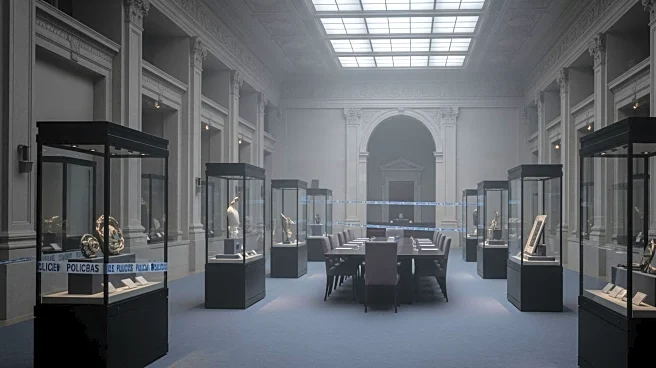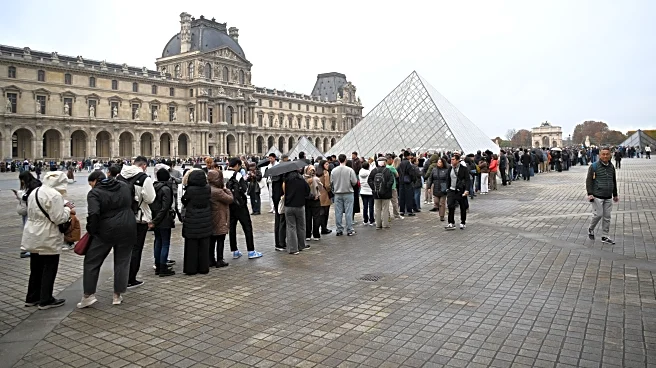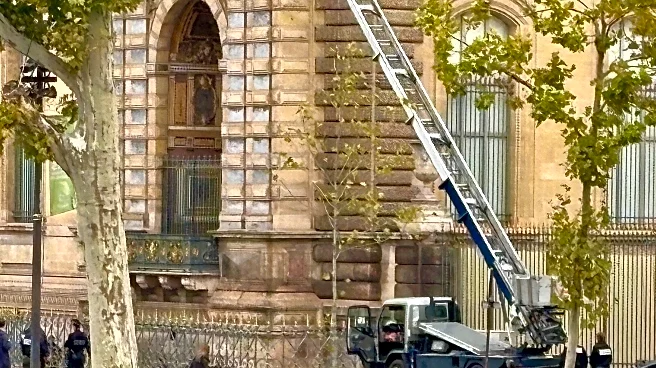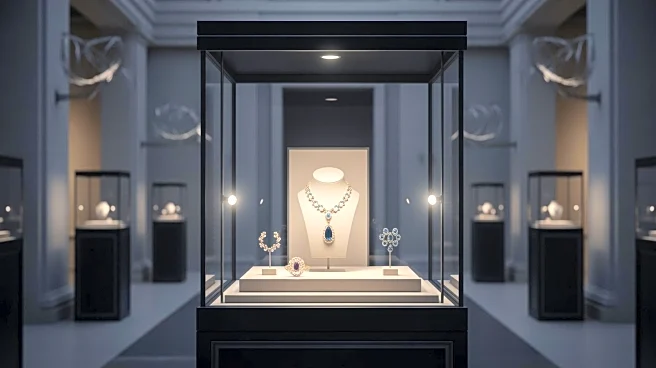What's Happening?
A group of thieves successfully executed a seven-minute heist at The Louvre, one of the world's most visited museums, stealing valuable jewelry that once belonged to Napoleon. The theft has captured international
attention due to the historical significance of the stolen items and the audacity of the crime. The museum, known for its extensive art and historical collections, is now working with law enforcement to investigate the incident and recover the stolen artifacts. The heist has raised concerns about security measures at major cultural institutions.
Why It's Important?
The theft of Napoleon's jewelry from The Louvre highlights vulnerabilities in the security systems of even the most prestigious museums. This incident could prompt a reevaluation of security protocols at cultural institutions worldwide, potentially leading to increased investment in security technology and personnel. The loss of such historically significant items also represents a cultural blow, as these artifacts are irreplaceable links to the past. The heist may also impact tourism, as potential visitors could be deterred by perceived security risks.
What's Next?
Authorities are expected to intensify their investigation to track down the perpetrators and recover the stolen jewelry. The Louvre may implement immediate security enhancements to prevent future incidents. Other museums and cultural institutions might also review their security measures in response to this high-profile theft. The art world and law enforcement agencies will likely collaborate to ensure the safe return of the stolen items and to prevent similar crimes in the future.












